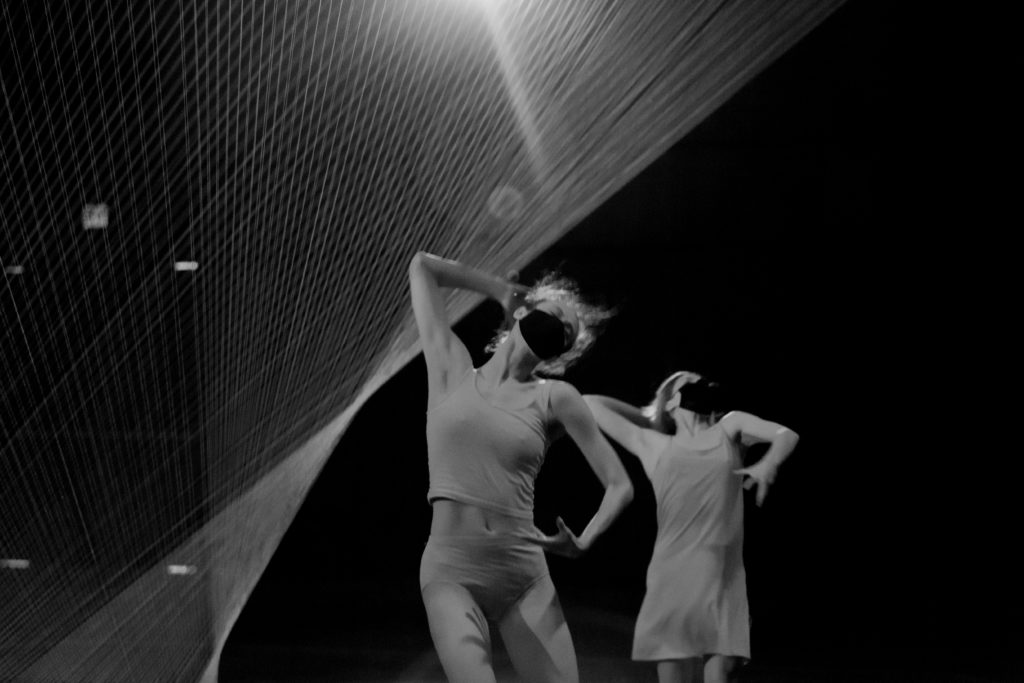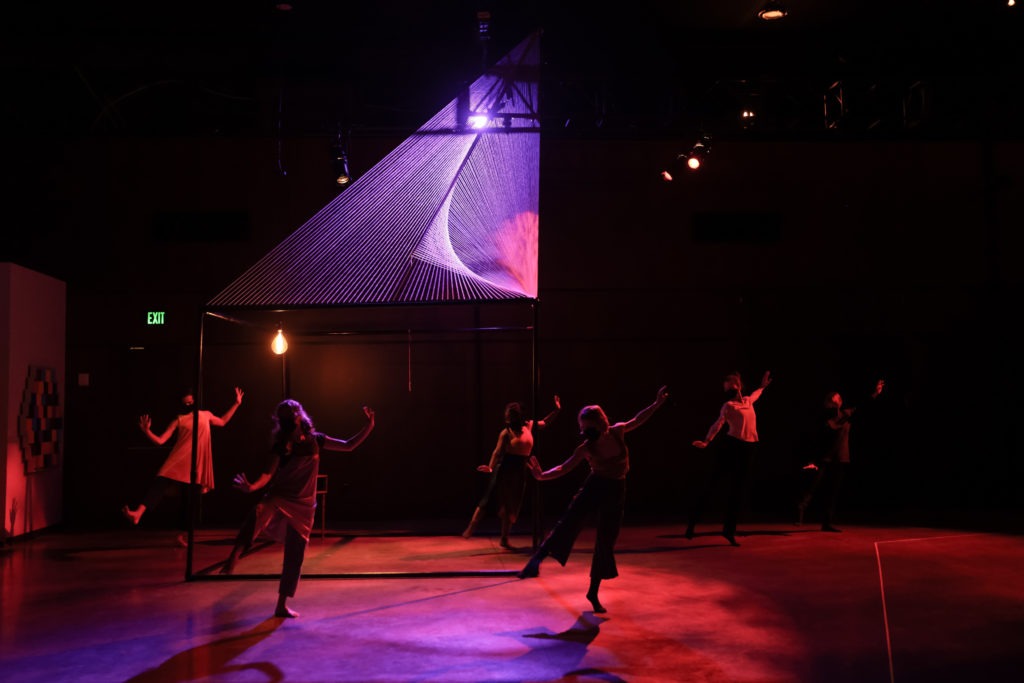At Oz Arts Nashville
Prism: A Performance Installation Experience
Running through next weekend at OZ Arts Nashville is David Flores’ new work, Prism, which is “…a performance installation experience created for a physically distanced world.” At times comforting and rejuvenating, and at others disorienting and troubling, the work is more descriptive of our current moment of coming out of a pandemic than prescriptive—it intimately expresses our “distanced,” and seemingly permanent state of dread and suspect hope. However, it offers very little in the way of escape or panacea. In four movements, the work spans 35 minutes and is presented in OZ Arts’ great Warehouse space in which the small and socially distanced audience is permitted to wander freely (within a designated area) all the while maintaining distance from the dancers and each other.

The first movement opened with New Dialect veterans Emma Morrison and Becca Hoback in the center of the room, circling a sculpture in string painted in red light from above. Falling in and out of tandem, the two dancers engaged their room with a remarkable charisma balanced by a cold, emotional distance. The music, composed by Vanderbilt Alum George Miller, similarly balanced a texture-based sound design created/performed by Adam Lochemes on laptop with the extended techniques of Alicia Enstrom on violin.
The second movement began, in a corner of the room, perhaps in quarantine, but certainly in a stylized domestic setting with the entire troupe of dancers (which, apart from Hoback and Morrison, include Lenin Fernandez, Rebeccah Peshlakai, Sarah Salim and Joi Ware). The choreography here was striking, as these dancers too fell in and out of synchronized movement, across and between the house structure. The choreography cross-cut the domestic setting and seemed to largely express the shared experiences both within and without the domestic setting. Accompanied by a reboot of Crosby, Stills, Nash, and Young’s “Helplessly Hoping,” the nostalgia for an idealized family life was troubled and problematized by the dancers’ constant social distance.

The third movement’s sculpture was drawn of elastic string, which came to resemble any number of things, from prison bars to soundwaves, with the soundscape depicting a tension both emotional and material. The dancers pulled and pushed as the string gave way, but only enough to accommodate their movement in patient captivation—a kind of encompassing stasis that longed for progress.
The fourth movement, a reprise, brought Morrison and Hoback back to the center of the room and they entered the center of the sculpture where the floor is revealed to be water. It was overwhelming to see the intimacy of the two dancers when they enter the water, embracing, comforting, even baptizing, one another to an accompaniment that seemed inspired by Erik Satie’s Gymnopedies. This expression of both nostalgia and hope for intimacy accentuated the longing for physical and social contact that we all feel so deeply.
In all, Flores’ work is inspired; its abstraction is just thorough enough to allow one to read it into their own lives in any way that they’d like. Perhaps that is why he has titled it Prism? It will refract differently whatever light an audience might bring to it. As such, the experience will likely trigger the issues of separation that are already present in an audience’s mind and heart. In the current context, these feelings might be nearly universal, but isolation and loneliness certainly aren’t exclusive to this pandemic.



